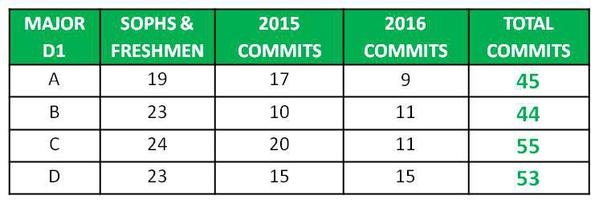I was curious about the seemingly high number of commits to some top schools, so just for fun, I looked at the 2016-'17 projected rosters at four Top 25-ranked D1's. I did this by adding up each team's current sophomores and freshmen, plus its 2015 and 2016 commits according to PG.
Here's what I found:
With roster limits of 35, I draw a couple of conclusions:
- Even given the fact that teams lose players to the draft, academic or team violations, pre-NLI injuries, cuts and more, some teams do seem to be over-committing.
- Players who want a shot at the top programs are probably better off committing early.
But of course I could be way off base here, so I'd love to know: Are these numbers in line with historical norms -- or do a couple of them seem high?
p.s. - for my friends whose sons are pitchers, here's the number of hurlers at each of the schools. My conclusion: WORK HARD AND BE PREPARED TO COMPETE!!




